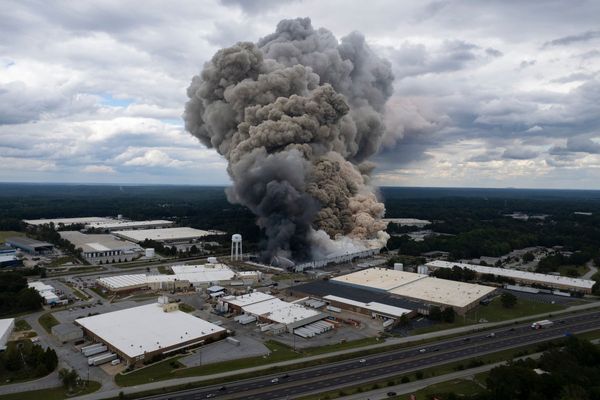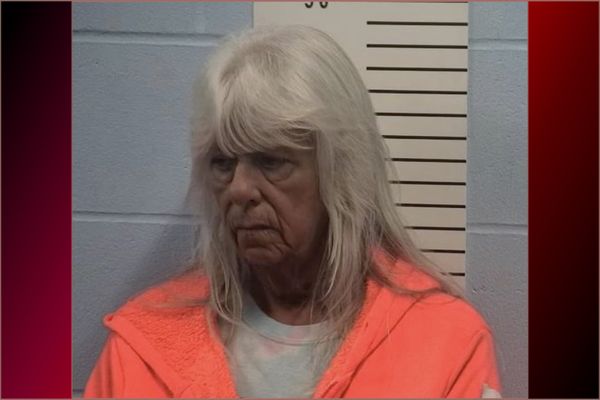Making a natural history documentary is a test of patience and endurance, and on this particular day of filming on Ningaloo Reef Tim Winton had finally run out of both.
One of Australia's greatest authors, Winton has been captivated by Ningaloo on WA's north-west coast for more than 30 years. He's spearheaded campaigns to preserve it and now was working with a film crew to capture its wild beauty for an ABC documentary series, Ningaloo Nyinggulu.
For five nights, he and the crew had been anchored on the reef in strong winds, hanging off the side of the boat for hours on end, waiting to capture footage of the coral spawning. It was a shoot that had been previously cancelled due to a cyclone and then COVID lockdown and now Mother Nature wouldn't play ball.
"It was just a grind waiting for this bloody coral reef to do its thing," he says.
"I was really enthusiastic on the first couple of nights and bouncing up and down, everyone else was on scuba and I was free diving. We were getting to the point where we were running out of crew days, the money was running out and by the fourth or fifth night I was honestly over it. I just said 'bugger it, I'm not getting in the water until there's spawn, tell me when there's spawn and I'll get in the water'. I just thought this ungrateful place. I've given half of my life to saving it and it won't even show up at a convenient hour just to make my life a little bit easier. It finally kicked off and it was beautiful watching it happen."
While Mother Nature eventually delivered, she then did something unexpected — and Winton says it's a lesson for filmmakers and human beings in general.
"Because it's a La Nina event the wind didn't blow [and disperse the spawn out to sea], it didn't go away and 15,000 fish died that week at that site alone. But that's the nature of the place, it's a wild place and it does wild things and it's really humbling. You are not in charge of anything that's going on. As filmmakers, you make all your plans, you've got all your lists, you've got all your gear, you're doing research about what is going to be in the water at this time and you just hope something shows up."
That hope propelled Winton and director Peter Rees through 400 challenging days of filming Ningaloo's three interconnected ecosystems – the World Heritage Listed Ningaloo Reef, Exmouth Gulf and Cape Range National Park — a sanctuary for a huge variety of species, including some that are endangered.
It's a rugged and remote place where the wind howls and the temperature soars from the mid-30s into the 40s.
"This was by far and away the hardest show I've ever done," says Peter Rees, who came up with the idea of telling the story of Ningaloo through the eyes of one of its highest profile defenders and convinced a camera-shy Winton to write and present the doco (he's also co-executive producer).
The lure was the chance for Winton to interact with the natural world in ways he'd never been able to before.
Working with about 100 experts — scientists, researchers and Traditional Owners – and with appropriate permits, their perseverance paid off and they captured some extraordinary moments – Winton picking parasites off the lips of a whale shark, cradling a 400-kilogram dugong in his arms while scientists tag it, and navigating a narrow underground cave to find the rare, tiny Blind Gudgeon fish.
"Even 20 metres underground in the aquifer it's bloody hot," says Winton.
'You feel like you're in the world's cloaca, it's intestines, that's narrowing and narrowing. The ceiling is just a few centimetres above your head and the water's up to your chin. It's hard and a little bit scary for an old person but these are really rare experiences."
"To be able to hold a dugong in your arms or a critically endangered ray, like the Bottlenose Wedgefish, to stop a whale shark in its tracks so that scientists can work on it, to be in the bowels of the earth holding globally important stygofauna in the palm of your hand — more people have been on the moon. So that does temper your discomfort and you think, well, you're in a pretty privileged position here," he says.
A heart-stopping dance of life and death
Nature is as brutal as it is beautiful. The team captured rare footage of a humpback whale nursing her calf in the shallows and heart-wrenching film of turtle hatchlings running the gauntlet of predatory crabs, and a pack of orcas on the hunt, trying to separate a vulnerable whale calf from its mother.
"That was historic [in Exmouth Gulf]," says Winton.
"That's never been captured on video before or observed by scientists. Watching this incredible dance of life and death was really intense.
"The worst thing is when you have spent so much time trying to save the place and keep its wildness intact, maintain its integrity, that really does mean that you have to accept its wildness — and its violence. It was a really tough thing to witness and the audio I think is the stuff that does you in because it's so noisy, there's a lot of shrieking. It's really confronting but it's a privilege to see it because it means that the place has recovered and the species is recovering. Having said that, was I heartbroken that the calf and the mother got away? Not at all, but when [a place] is not wild, it's dying in ways that you just can't see. It's fading into the kind of muteness that sadly characterises so much of the rest of the continent."
Rees had never produced a documentary on this scale. It's been four years in the making, delayed at times by the complications of COVID, and he moved to Ningaloo for a year of filming.
While some shoots were pre-arranged, whenever he had a crew on deck Rees had a boat on a trailer hooked up to a 4WD ready to launch if one of his network of local contacts, out on the water or in the air, alerted him to a sighting that was worth filming.
"If the BBC was making a documentary like this they would go to a location for six weeks and wait for the animals to turn up; if they didn't, they could afford to burn the sequence but I didn't have that budget or luxury," he says.
"I had a week to film each animal and every day I had to get something. I did the research and we kept trying to be in the right place at the right time. One day we went to film rays and didn't find a single one but we found the North-Western Mangrove Sea Snake, which is an animal that actually has almost nothing known about it, no-one has comprehensively filmed and we just stumbled across it. There's nothing that we shot [throughout the entire production] that didn't involve me breathing a major sigh of relief."
At times the crew threw down a swag in the bush or slept on boats at sea while waiting for animals to appear. Rees came to relish the challenge of working out how to find and capture footage of an elusive animal.
"It was incredibly satisfying learning the animal's behaviour, learning how to outwit the animal and learning how to build a system or find a way to keep the animal in position so it does the behaviour that you want it to do," he says.
"Sea snakes turned out to be extremely easy to film but things like ants are incredibly hard to film, now you wouldn't have thought so. As part of the story about emus we wanted to talk about the fact that in Australia most seed dispersal happens by ants, but getting a shot of an ant carrying a seed is extremely difficult because we didn't know which ants eat which seeds.
"I collected seeds for three months over the season and every location we went out to if I found some ants, I dropped one of each of the different seeds to see what happened. Eventually my wife actually found some ants that responded and did collect the seeds. But the problem with filming ants is wherever they go, they leave a trail of acid that gets all over the lens.
"So, we had to build a rig where we could actually have the camera upside down, with the legs of it away from the ant hole so the ants wouldn't climb up it, then have the tip of the probe lens on the camera just higher than one ant could reach while standing on the back of another, otherwise you'd end up with ants all over everything. It was like a puzzle and I really enjoyed solving the puzzle."
What Winton found most terrifying
While filming the documentary was physically demanding, for Winton the biggest challenge was, surprisingly, writing it. Over 40 years, he's produced 29 books, many award-winning, including Cloudstreet, Dirt Music and Breath, and his contribution to Australian literature was this week recognised with the Australian Book Industry Awards Lloyd O'Neil Award. But he felt utterly out of his depth scripting a nature documentary.
"It felt that I was doing it in survival mode, in perpetual panic," says Winton.
"I don't have any qualifications to write a natural history series, I've never done it before, so that was a bit terrifying in the sense of how do I do this? With natural history there's quite a bit of scientific information that you have to convey – there might be five or seven scientific papers and you get 20 or 50 words. You don't just write one script, and then revise it, you [start with] an aspirational script, a recipe for what you'd like if you can get all the ingredients, and then two years later you end up writing a script based on what ended up being 2,000 hours of footage. Also, for me, as a sole trader for 1,000 years, having to work with 'committees' and so many fingers in the pot, trying to make something a bit poetic out of something that can look pretty prosaic on paper was terrifying.
"Also, I've spent 40 years of my life doing what I can to dodge being in the media so I was a bit reluctant about [being on] television. I was always going to be the only one on the boat or in the cave who didn't know what they were doing but I'm the person who has the most focus on them, so, that's kind of embarrassing. But I did it out of a sense of duty to the place which I love and has given me some of the greatest experiences of my life."
ABC's commissioning editor Stephen Oliver, who has a deep affection for Ningaloo after living for a while in WA as his wife, a marine biologist, did post-doctoral research on the reef, believes Winton has brought a unique perspective to a natural history documentary.
"Tim Winton is undoubtedly one of our greatest writers, but he is also a deep thinker and hugely passionate environmentalist. As he says in the show, he has lived, loved and fought for Ningaloo for several decades, so it was a case of bringing that passion and knowledge to the screen," says Oliver.
"But unlike a journalist or a scientist, it wasn't simply a transfer of information he can bring, but also a feeling – a sense of the place that connects us emotionally in a way I think TV often doesn't quite achieve. He had never written a documentary for the screen before so it was a fascinating and privileged journey to work through that with him – as he realised that the pictures can do some of the work, unlike in books. His beautiful words alongside stunning cinematography is quite a treat for the senses."
"It is a towering achievement to make this series from all involved, but not least by Celia Tait, the executive producer at Artemis Media, who wrangled a large team over several years in difficult circumstances. I desperately hope audiences respond to it and realise how lucky we are to have such a unique, pristine environment on our own coastline," says Oliver.
A love letter or a eulogy?
Winton was at the centre of the original Save Ningaloo fight 20 years ago and is the patron of the campaign to secure World Heritage status for Exmouth Gulf. Throughout the long and difficult days producing the documentary, Rees says he and Winton wrestled with whether they were writing a love letter or a eulogy to the place that is particularly vulnerable to climate change and a warming planet. In the end, they chose a love letter.
"People have asked me how do you feel about exposing this fragile and wonderful place to public scrutiny on a global scale?" says Winton.
"But if you don't tell people about a place and it stays secret, then — and anyone who's in Western Australia in particular knows this — bad things happen in the dark. Bad things happen to places over the horizon. And if we hadn't made Ningaloo famous 20 years ago, it would be gone already, so you have to elevate a place's social value, it's sadly sometimes it's financial value, as an intact system in order to get the kind of status required to protect it."
Ningaloo Nyinggulu premieres Tuesday, May 16 at 8.30pm on ABC TV and ABC iview.







